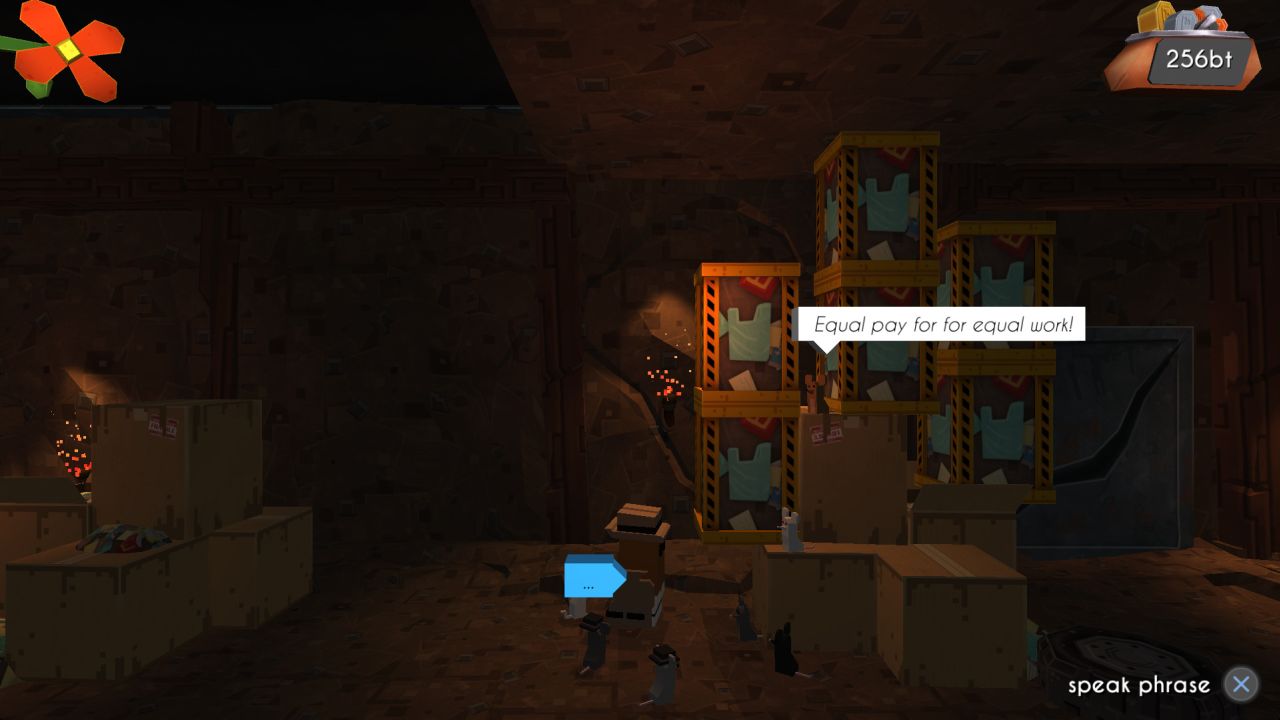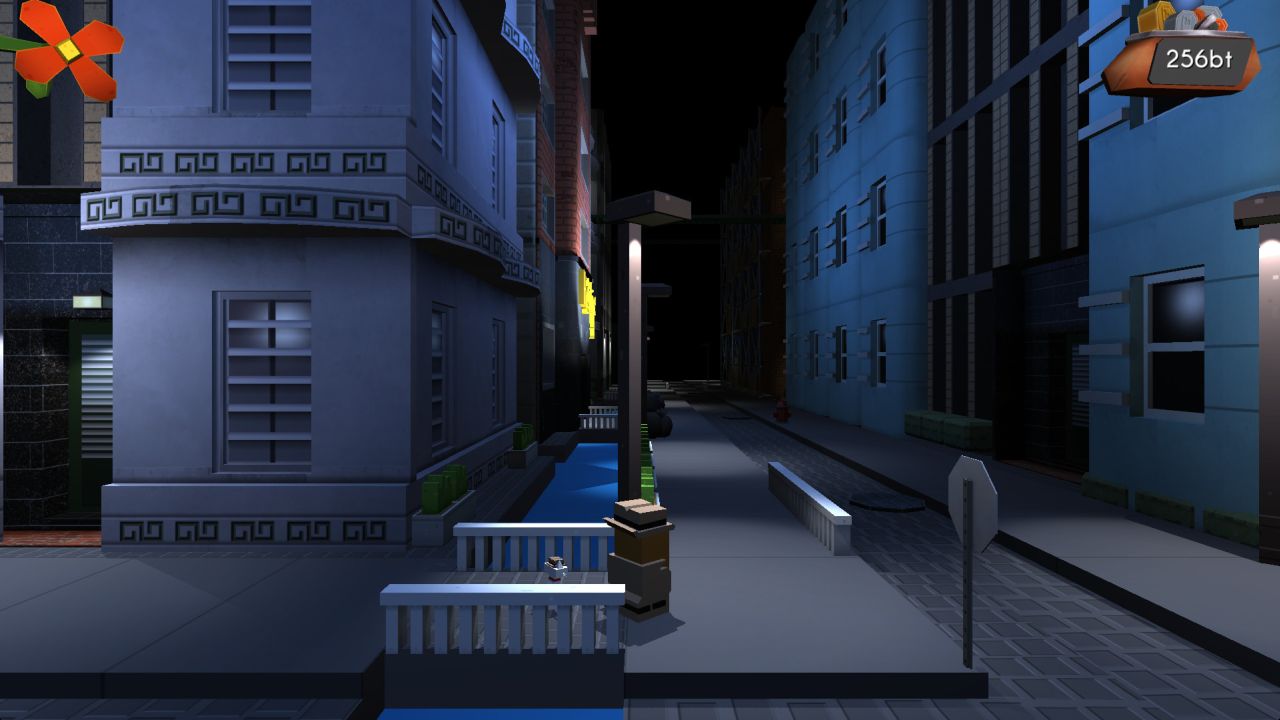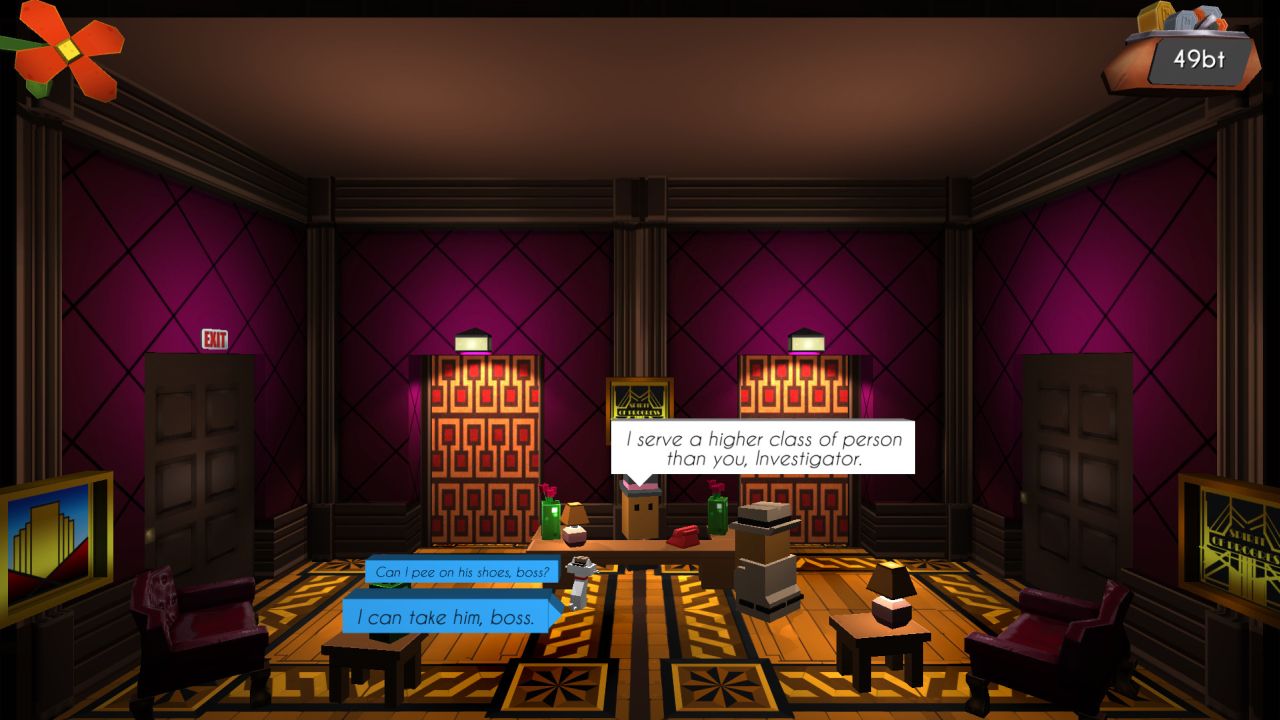Hot Tin Roof Review
Maze-like Metroidva-noir muddles mechanics
Don't imagine that having a clear target means that you won't end up trekking back and forth across the same old mean streets, though, 'cause navigating the world of Hot Tin Roof is nothing if not a kick in the teeth. Inspector Jones grew up in a good, honest, side-scrolling household, see, but moving on a single plane won't cut it in this rotten city of vice, secrets, and three-dimensional geometry. Sudden ninety degree camera rotations at pre-determined points let you move in all directions, but between the disorientation associated with them, the incredibly homogeneous environments – at least, in the more Metroidvania-y areas – and the ease with which one can miss the tiny cue for moving into the foreground, visualising the layout of your surroundings is like trying to traverse an M. C. Escher landscape while staring at nothing but the floors. It might not seem quite so pressing an issue when you're just wandering around looking for flowers to staple to your lapel – really, that's how your health is represented – but when you're, say, looking to get a game over with reasonably quickly, possibly for the purposes of writing about it, or possibly because you have zero reason to acquire upgrades... well, I think you understand. Map screen? Don't be silly, what kind of Metroidvania would have a map screen?

Goodness me, we haven't even touched on Hot Tin Roof's really interesting mechanic yet. As mentioned before, you can change the rounds loaded into your revolver in order to grapple surfaces, wash dishes, light cigars, that sort of thing, but instead of manifesting as a 'change ammo' button, you're given a reloading screen that falls somewhere between Receiver and one of those fiddly Nintendo DS touch-screen minigames that developers used to shoehorn in so that Reggie wouldn't break their kneecaps. You crack your revolver open, spin the cylinder around, click the cylinders to fill them with whatever bullets you feel are about to be useful, then snap it shut again and carry on. It's a cute feature, and for maybe the first half-hour it's tolerable, but as the hours wear on my patience for doing the same menial task over and over wears thin. The varied demands of your surroundings mean that you'll be swapping out the contents of your gun almost non-stop, but since the interface for doing so is largely mouse-driven, there's little hope of building any muscle memory to speed up the process. Hot Tin Roof isn't normally the type of game where you'd attach much value to the flow, but when you're stopping every few paces to fiddle with your gun for ten to fifteen seconds, the whole experience ends up about as smooth as being pushed down a staircase in a wheelchair. I'm grateful for the function that lets you quickly reload the same type of bullets you just expelled, but d'you think you could give some hint that the feature actually exists, guys? I went through almost half the game before discovering it.
I suppose what's really aggrieving about this whole mechanic is that there doesn't really seem to be a reason for it to be there in the first place. There's serious potential here for some really clever puzzles where you pre-load specific sequences of bullets to complete tasks, but it only comes up towards the end of the game and never gets any more complex than 'ignite explosive rounds with fire rounds', which is stretching the definition of 'puzzle' a wee bit. Not that there's much to measure up to; outside of the actual business of deducing from clues – a process that more often than not boils down to brute-forcing the solution – the game is rarely more intellectually strenuous than the good old standby of 'hit four switches'.

How does it run, then? Well, with the exception of the framerate, which occasionally dips pretty heavily despite a loading zone bifurcating the two or three city blocks that comprise the overworld, Hot Tin Roof is filled with harmless whoopsies more than anything else. Dialogue lines, for instance, are pinned next to the characters that speak them, which works fine right up until the point where you start having a one-sided conversation because your partner's pathfinding has yet to place him anywhere in sight. I also suspect that the knockback rounds, which give you the 1940s equivalent of a rocket jump, were a late addition, because a lot of the invisible triggers in the game – for changing levels, rotating the camera and such – don't account for the possibility that you won't be at ground level, meaning that it's incredibly easy to accidentally soar over them and end up walking off the edges of the screen, through world geometry and into The Negative Zone. There, you will presumably find all the items and characters that the game has a habit of rendering in the distance when it's not supposed to. Occasionally you'll find bits of the environment that are a lot less solid than they appear, but to my dismay I've yet to find any hidden upgrades behind them – just pockets of the empty void and occasional accidental sequence breaks.
It's all a damn shame, really, because it's clear from even the most cursory glance that Hot Tin Roof is a game with a heart big enough to engulf almost – the keyword being almost – all of its flaws. In a way it reminds me of Brutal Legend: a colourful landslide of character, style, and writing that entertains without fail, spread all too thinly across a fresh style of gameplay that, to countless collective groans, doesn't really work. That reminds me, I ought to give kudos to the soundtrack. A film noir setting, even one deeply steeped in comedy, wouldn't be complete without a laid-back jazz quartet to trudge along to, and even if it sometimes sounds like somebody is playing their Sega Master System in the background, it still lends the appropriate atmosphere to the moody, nocturnal city.

So, here's where we go back to pretending to offer consumer-friendly advice: is Hot Tin Roof worth it? Well, if you're the kind of wide-eyed optimistic type who treats indie games as a big colourful bargain bin to dip into when you're down to your last ten dollars and want to feel all grown up and cultured, then go for it, 'cause it's a lot more novel than whatever you're used to. If, on the other hand, you're a no-nonsense type, cynical enough to make Sam Spade look like a boy scout, and you just want a solid Metroidvania that you can boot up without being hit with a wave of resignation and thoughts along the lines of “oh god, what was I supposed to be doing?”, then steer clear. To those who can stomach its tedium, Hot Tin Roof is an imaginative little adventure; to everybody else, it's a gut full of lead. That's pretty noir, right? I think that's noir.
 Comments
Comments










